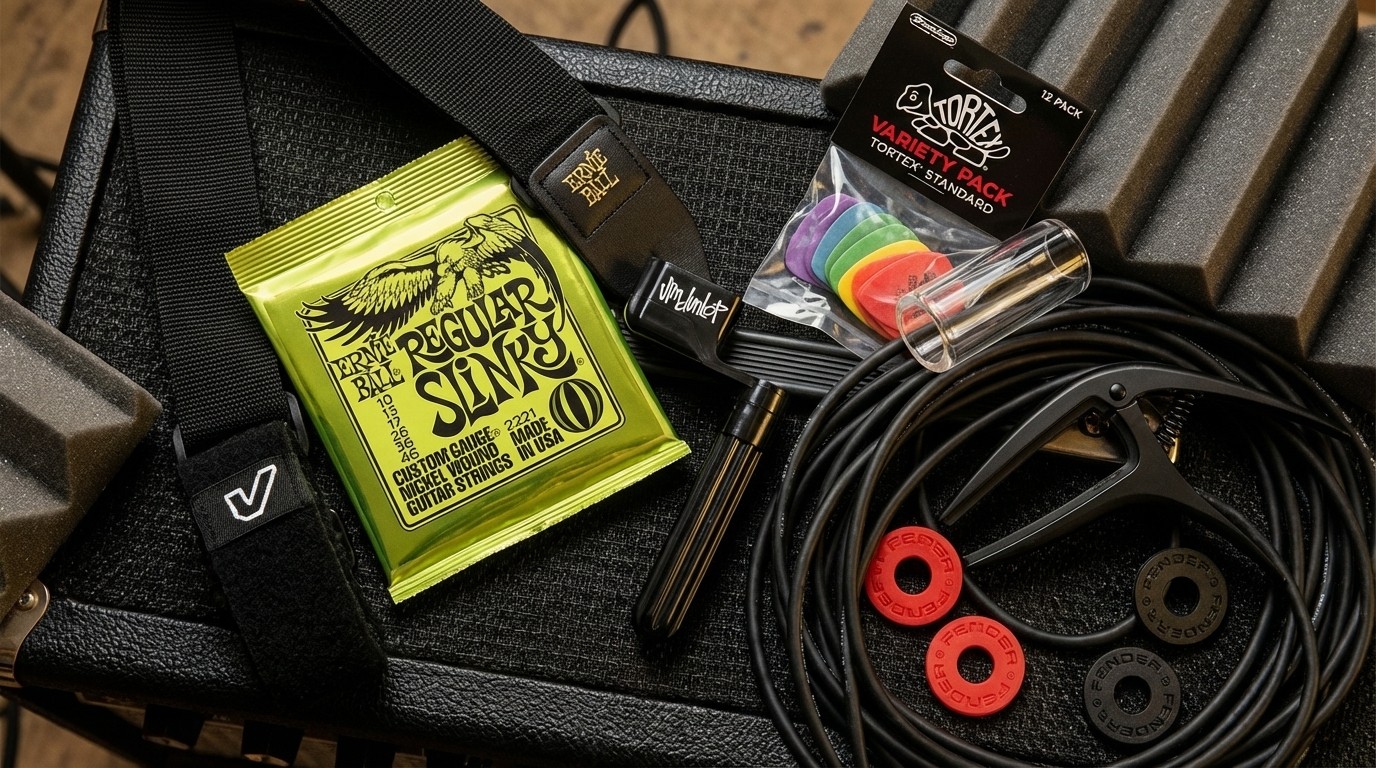Alain Johannes: "I love the immediacy of acoustic instruments but I love the crazy worlds you can create with pedals - all I’m looking for is honesty and rawness"
The enigmatic multi-instrumentalist talks working with everyone from Chris Cornell to Mark Lanegan, and his breathtaking new solo record, Hum
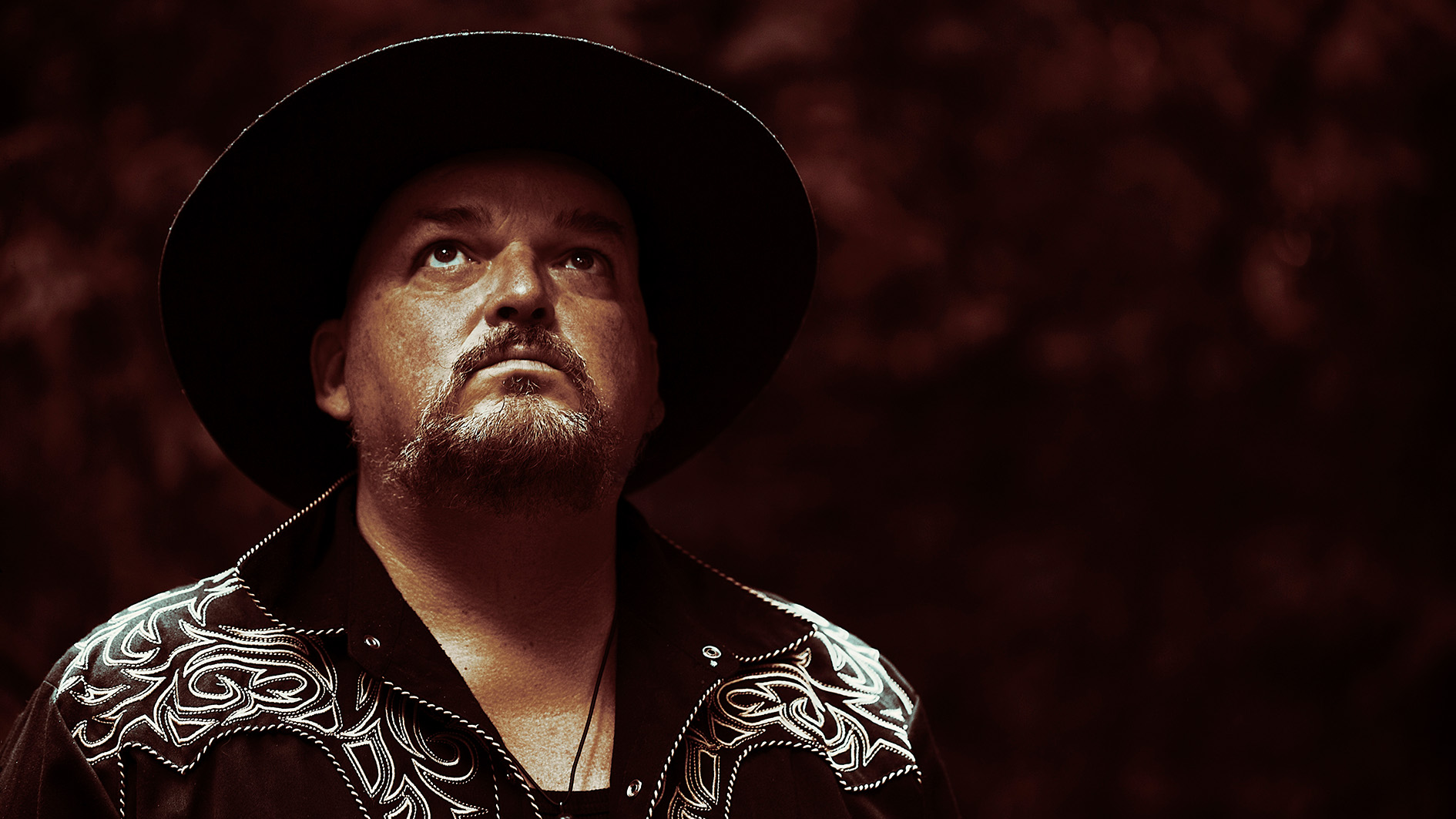
“I’m stuck in Santiago... I’ve been here since March and apparently I can’t leave,” begins alternative rock mastermind Alain Johannes, when Guitar World calls right in the middle of a global lockdown few could have predicted.
“I set off on my solo tour and stopped in Santiago to play with my trio and some friends, honoring Euphoria Morning - the record Natasha Schneider and I were part of with Chris [Cornell]. We were a week into rehearsals and it all started, though I guess it had started way before that...
“I holed up at my cousin’s for a few months and then got my own Airbnb to have some privacy. For a week I was able to walk around, but then they started getting thousands of cases a day and locked it all down. So I’ve been indoors in a tiny space for over four months. I was sick before I actually came on tour, I had pneumonia and bronchitis, so I’m hiding extra just in case…”
Johannes’ second solo album, Hum, was recorded at the beginning of the year, right after battling those illnesses. Its 10 tracks document the multi-instrumentalist’s journey of recovery, songs like If Morning Comes pondering his own mortality and others delving deep into the profound sense of loss following the death of his wife Natasha, close friend Chris Cornell and various family members over the last 12 years.
Despite his connections to Chris Cornell, Queens Of The Stone Age, Arctic Monkeys, Puscifer and more, this could very well be the most emotionally charged music he’s ever worked on...
“It’s been a really strange time,” he admits. “This solo record lifted me up from being so damn ill. I’m not 100% sure I didn’t already have it [COVID-19], I did a test but it wasn’t conclusive. I’ve never been that sick before, it wasn’t like any pneumonia or bronchitis I’ve ever had. The antibiotics weren’t doing anything.
“So maybe I already had it, I don’t know, and I don’t know if that helps for later. My lungs are still healing, they took a real thrashing with whatever I had in LA. I got back from Europe in November, after touring and producing a band in Naples. That’s when I got sick. I didn’t get out of bed until early February, then I made my solo record and flew down here…”
All the latest guitar news, interviews, lessons, reviews, deals and more, direct to your inbox!
Much like your 2010 debut, Spark, the new music is incredibly deep and almost mantra-like...
He was a multi-instrumentalist and ended up being an inspiration. He was always around the house, bringing his band over to rehearse
“It was created out of my need to move forward and heal in so many different ways, so a mantra is literally what I used it as. The music was very spontaneous. I’d been feeling the need to make this record through 2019. I hit a low when Chris passed away three years ago, that resurfaced a lot of feelings of loss, all connected to people that I love – Natasha, my mother, my father I’d just gotten to meet in 2010 for the first time... he was a musician as well.
“My uncle Peter passed away too, he was the guy who put a guitar in my hands when I was four years old. He was a multi-instrumentalist and ended up being an inspiration. He was always around the house, bringing his band over to rehearse. I was around a lot of music, musicians and instruments from a young age.
"Whenever I used to sneak away to smoke joints and party somewhere, I’d take advantage of the flutes, trumpets and four-track recorders. It was great to have that kind of exposure. Both sides of my family are musicians or entertainers...”
It’s amazing how such beautiful music came out of such a dark place...
“I found myself feeling pretty down, I’m usually pretty hopeful and energetic. I kinda weathered the losses and internalized them in a very philosophical way and wanted to pay homage and keep them all inside me.
"But I hit this wall and my health got pretty bad. I’ve never been a person that abuses anything, I have a bit of wine here and there, but somehow the age and prolonged stress took its toll.
“So I decided to go on an acoustic solo tour just to experience a connection with whoever might be out there, I didn’t know if anyone would come! That was through Europe in September, then I went to Italy, got back and got sick. It kept getting worse and I was struggling to breathe.
"They put me on different treatments including steroids. There was a lot of time just sitting in bed just reflecting on my life. I built up all this energy to get back up. If Morning Comes is me lying there and unable to breathe, wondering ‘Is this it?’ Telling myself if I make it through this, I will get back on track and try to be creative, communicate and carry on the legacy that Natasha and I started.”
I really don’t like to comp or do several takes. I’d prefer to turn the mistakes and bad moments into good moments
There’s a lot going on with that song - spacey echoes, fuzz, modulated leads and droning acoustic chords with a Zeppelin-y quality...
“That was a Maton 12-string with a DADDAD tuning. The tuning is what gave the song a really cool sound. I ran a stereo path, one side with the [Vox] AC15 through a Nobels distortion and the other was the Supro with a Red Panda Tensor on this reverse setting.
"I tried to match each side and feed them into the [Gamechanger Audio] Plus Pedal and then the [Electro-Harmonix] Freeze, with the [Strymon] Volante running multi-head repeats into a 360 looper.
"It was just one take, reacting to the song as it happened! I love that feeling… I really don’t like to comp or do several takes. I’d prefer to turn the mistakes and bad moments into good moments.”
So how long did the album to take to record?
“I didn’t want to overthink, so I ended up doing the whole record in 12 days. I was mixing at night after recording, plus writing lyrics then singing vocals while reading the lyric! Each day fell into the next. I knew day two was going to be Hum. I didn’t have the lyrics or anything but I knew how it would flow.
"The third song [Hallowed Bones] was written in the morning it was recorded. I had been imagining what should happen next after the silence that ends the second song. It was recorded in sequence, like a vinyl. So I created it as I was imagining it unfolding as an album.
“What I prefer is the excitement and danger that comes with being in the moment. You have to resign yourself. If something unexpected happens, you have to make it work and keep moving on. It’s important to stay in the present. Forgot about the internal dialogue and shut it down, don’t let it stop you.
"The inspiration already exists, it’s already waiting for you and all you have to do is grab it. You have to trust in yourself and not trip as it’s happening. Having to relearn these songs, some I’ve only ever played once, is going to be interesting... I will have to sit there and decipher what the hell it was. It won’t just appear out of nowhere!”
Carlos Perez was very much the Django Reinhardt of Portuguese folk music
What was the first song you started working on?
“I use my Instagram as my sketchpad. I improvise a lot and keep track of what’s what and things that could turn into a song or an atmosphere. I started with Mermaids’ Scream.
"I’d just gotten a Portuguese guitar and this was inspired by being over there and producing Dead Combo. I fell in love with [Chilean guitarist] Carlos Perez who plays the Portuguese guitar. It’s a very unusual 12-string instrument with a rounded fingerboard like a cello, tuned CGADGA, with a very melancholy sound to it.”
Mermaids’ Scream also has some gypsy jazz-sounding lead lines...
“Carlos Perez was very much the Django Reinhardt of Portuguese folk music. It’s a kind of phrasing that has a very vocal vibrato and lots of glissando. The instrument is perfect for that kind of thing. I called it Mermaids’ Scream because I hear Chris and Natasha’s voices mixed in subliminally through the waves…
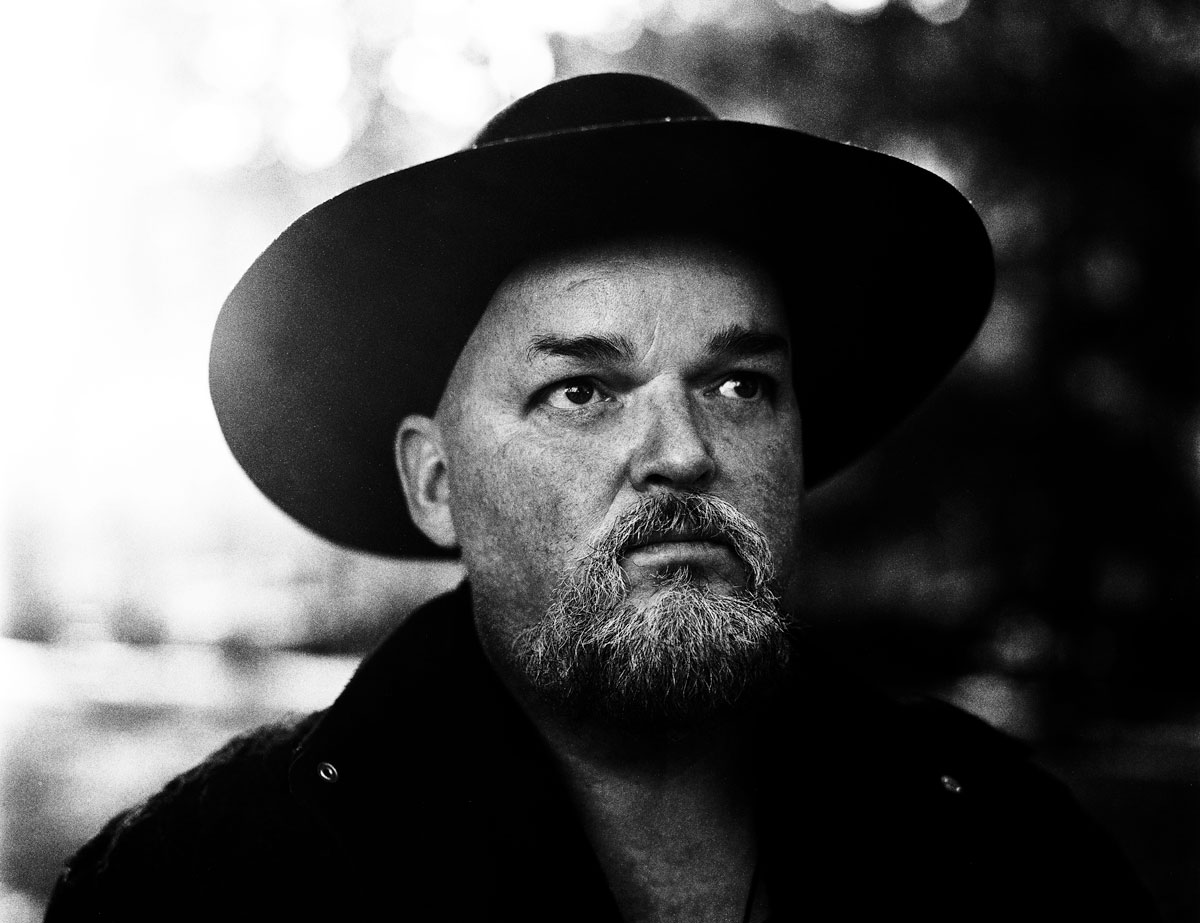
"I imagine myself on a rock, partly inspired by an Eggar’s movie with William DaFoe, The Lighthouse. It’s in black and white and has these really haunting mythological themes. I pictured it and instantly knew I had an arpeggio on my Instagram and the vocal melody in my head. I could feel the waves coming. It all came together.
“I got up that morning, laid down the backbone and just started filling in what I heard. There was percussion, then a fretless guitar played with an EBow. In my mind’s eye, I had this [Nick Drake] Riverman kind of arrangement. There were strings, horns and woodwinds ready to go.
"I’d been so ill with my lungs that I didn’t have the lung power for a bass clarinet part. It wasn’t going to work so my whole idea shifted to using mainly voices, percussion and a couple of exotic things and whatever acoustic instrument I was using. I limited the palette a little bit which was really helpful in order for it to flow the way I wanted it to.”
I limited the palette a little bit which was really helpful in order for it to flow the way I wanted it to
The title track also has a Nick Drake feel to it…
“On that song I used a DADGAD tuning with a sixth-fret capo for a very Nick Drake-ish progression. I’ve been playing around with that tuning for a long time, I fell in love with Bert Jansch probably in the 80s, when I first heard Pentangle, Black Waterside and Needle Of Death and all that stuff.
"I’ve also used DADDAD, like on the song Make God Jealous from my first solo record Spark. Having that one string looser, dropping the G down to a D, you get this interesting chorusing sound. My first memories as a kid were The Beatles, especially the George Harrison tunes…”
That would definitely explain a lot of the most Eastern-influenced and exotic sounds you are known for...
“After The Beatles, I got into Ravi Shankar, Ram Narayan, the Asha Bhosle soundtracks and I started finding new sitar players Niladri Kumar or Shahid Parvez. That kind of phrasing and beautiful tension against a drone or tonal centre has always attracted me.
"The same goes for jazz, but being self-taught I never quite got good at that. I grew up with world and classical music, I own a sarod, a sitar, a sarangi, a harmonium, a set of tablas which mainly just sit there, it would take a lifetime to play that properly. I can have a go here and there, but concentrated more on the stringed instruments and bamboo flutes.
“I like to be constantly discovering things… I’m a dummy on purpose! I’ve been playing so long, I can figure out what a chord is but it takes me a second. I prefer to approach things like I don’t know what the hell is happening. That’s why I like collecting instruments and learning how to play them to serve the purpose.
"If I hear a texture in my head and it’s a flute, I might as well buy a flute and practice until I can play that. It helps me communicate in a certain way that’s different to what a super pro musician would do."
What advice do you have for anyone hoping to learn those folky finger-picked lines used on solo tracks like Free, Someone and Speechless...
Whenever I saw a flamenco player on the street, I would watch really closely to figure out what was going on
“It is a flamenco technique. Another big influence when I was young was Paco de Lucía. I was living in Mexico at the time and borrowed one of his albums from my mom’s friend. I never gave it back!
"That took me into a whole new world, right while I was being introduced to Hendrix, Zeppelin and Sabbath. I wanted to be a badass flamenco guitarist because it had all this power and rawness.
“I was also attracted to classical music like Bach but obviously not reading music or having a teacher, I ended up taking in so much from Paco. I started to pick out things that were happening.
"Whenever I saw a flamenco player on the street, I would watch really closely to figure out what was going on. Then I came up with rhythms of my own… it took quite a few years. By the time I was 12, I got really into electric guitar. So that’s when I got into McLaughlin and Holdsworth..."
There are definitely flickers of Holdsworth in some of your outside lines on Nine...
“His story was that he wanted to be a saxophone player and his folks couldn’t afford to buy him one so they got him an acoustic instead. So he was trying to figure out how to play saxophone on guitar, using four-note slurs to achieve this legato, saxophone-like motion.
"He started playing guitar pretty late, around 17 or 18, and I’ve seen footage of him only a few years after where though his vocabulary isn’t as well-developed and a bit more bluesy, he’s already pointing at that extended stuff. I got to see him live many times thankfully in the '80s and '90s… a total freak!
“I would buy Holdsworth vinyls when I was 14 or 15 even though no-one around me knew who he was! There weren’t many progressive heads at my school. When I got my Jazzmaster, I started to use my fingers a lot more and anchoring around the tremolo bar. That’s when I started to bring back the fingerpicked stuff.
After dropping my pick or forgetting to bring one, it became second nature to use my right hand more
"I’m lucky because my nails are very strong, I can use them a lot and they don’t wear away easily. After dropping my pick or forgetting to bring one, it became second nature to use my right hand more. I realized that were so many possibilities.
"I found it cumbersome to hold the pick and fingerpick with the other three fingers. It’s developed slowly. I never really featured it much in Eleven or other stuff, though there’s definitely right hand stuff involved in songs like Follow My Way and a few others from Euphoria Morning. I didn’t really explore it until Spark, which is when I got the cigar box guitar.”
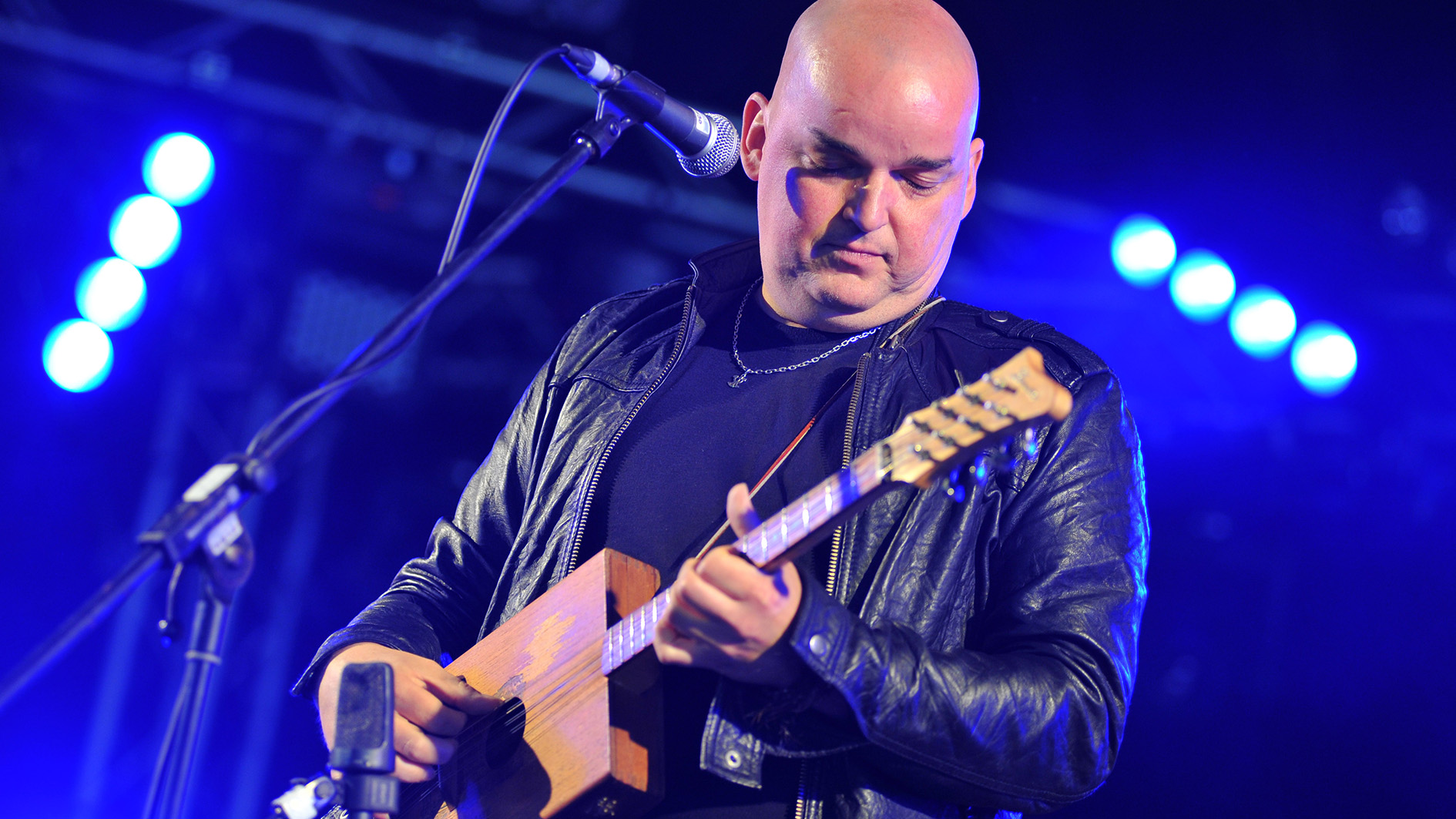
It’s interesting how you seem to draw from a much wider sonic net than a lot of alt-rock musicians you are connected with...
“I think it’s wonderful how music inspires itself and takes you down these roads. I can definitely credit George Harrison taking me into the world of Indian classical. Then Robert Fripp and Adrian Belew, David Torn, Jeff Beck...
"I remember getting Wired in the '70s wondering what the hell he was doing. I was actually in a Licorice Pizza, this record store, when Goodbye Porkpie Hat came on and I’d never heard phrasing like that in my life. I didn’t even think it was possible to be controlling the feedback, using tonal shifts and getting a guitar to sound so woody and natural. I couldn’t understand it.
“You hear McLaughlin and Holdsworth and get blown away by the facility, fluidity and complexity of it. But then there’s the other side, the feel, the touch, the taste and the tone – which are equally impressive. I’m not down on technical stuff at all, I love it. If a piece of music requires technique to communicate then so be it.
"There’s nothing wrong with that, it’s less cool or less punk. When I saw FEAR live, they were fucking shredding, shredding balls but also the perfect punk band. It all worked so beautifully.”
If a piece of music requires technique to communicate then so be it
What was the main gear used on Hum?
“On this album, I used my Jazzmaster for the electric stuff, plus my '80s Strat with a floating tremolo so it can go up or down and JW Restoration handwired pickups. The amps were a Supro Tremolectric amp which Bruce Zinky made when he had the trademark in the '90s.
"I love that amp, it’s a 310, pretty rare these days. I also had a Fender Excelsior, which is a fun tiny little amp, and a Vox AC15 which is another favorite. I have a custom from MP Amps called the Tauro, made by the Chilean maker Marco Plaza.
“I used my cigar box eight-string, tuned in fourths in C, so C-F-Bb-Eb. It has octave strings for C and F, and the octave comes first, so when you do cross-picking you get these cool cross melodies happening. It lives somewhere between a mandolin and a flamenco guitar, but also has a Persian feel too. It can be folky and American yet world music-like at the same time. I love it because it’s very portable.
"I used my Hofner copy bass guitar, the one that I used in Them Crooked Vultures, the Rhodes one with big flatwound strings. I used my '70s Messenger guitar made by Musicraft, which has an aluminum neck. I took the frets off and gave it to [original Red Hot Chili Peppers guitarist] Hillel Slovak, who played it when we were kids until he got a Strat and then gave it back. It’s my main fretless with EBow instrument.”
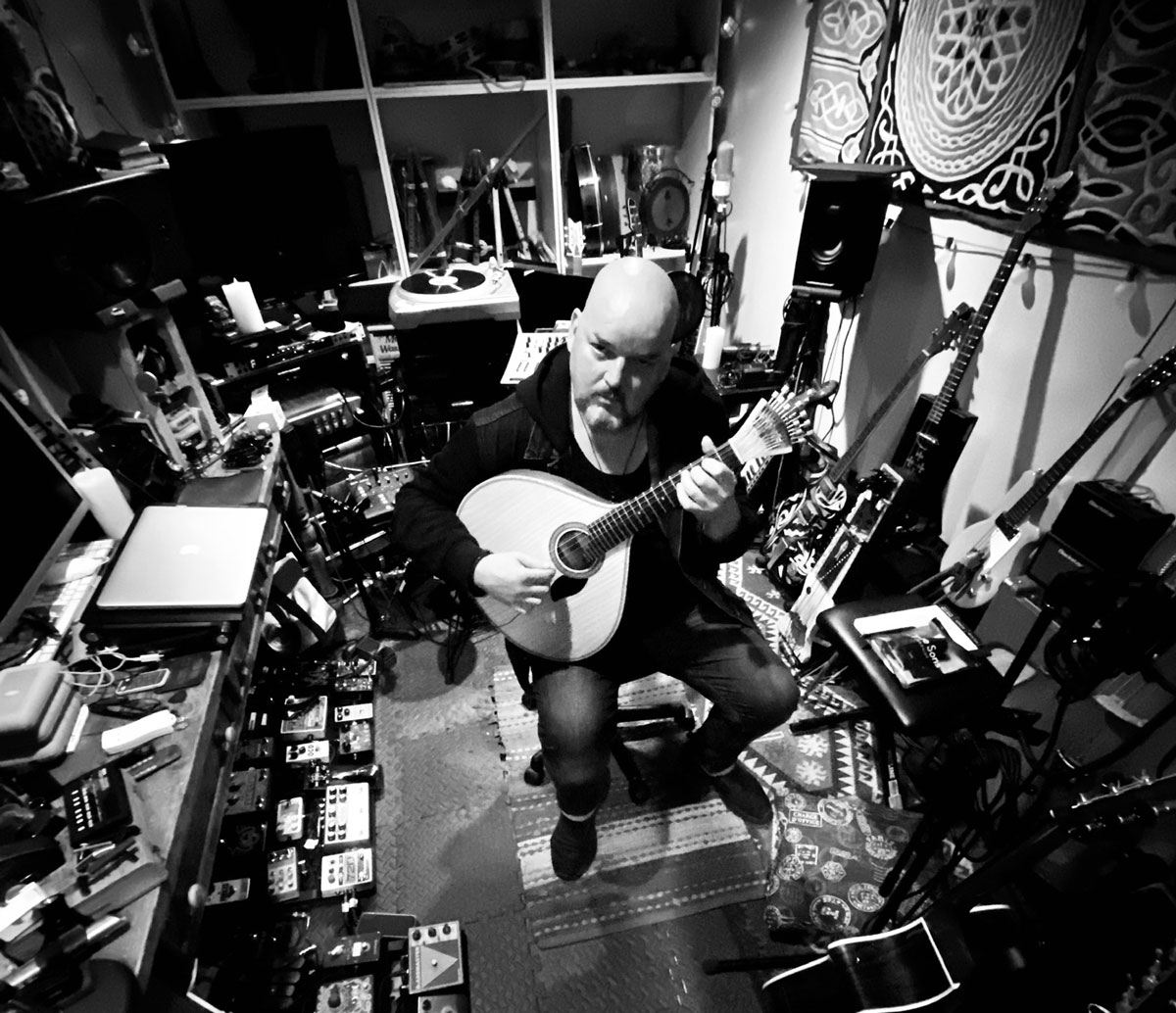
And we’re guessing there were a fair few pedals involved too...
“God, there were so many. I really like Dr. No pedals - he did my custom fuzz the 11:11 fuzz. He just made a new one called The Moon Canyon which I used too. I love my Strymon Volante delay and the FreqOut [feedback creator] by DigiTech, I used those quite a bit.
"I like the Plus pedal, it sustains whatever it hears much like the Freeze, which I also use. There were a lot of guitars too, though! I used a 12-string Maton, made in Australia, and a Republic Tricone for the song Hum.
“Actually, I just got a custom parlor acoustic made by an Italian luthier called Marco Bortolozzo and it’s a beautiful instrument I’ve been taking out with me on the road. It’s the loudest acoustic I’ve ever played and so dynamic.
"He uses the same kind of bracing technique as the Torres ones built in the 1800s, the first classical guitars that could compete in a concert hall. He came to the gig in Milan and brought one along. I was like, ‘Aaaah, I need this!’ So he came out to LA and we hung out for a few days and brought that guitar.”
Looking back on Euphoria Morning, there are some pretty crazy warbles on the song Mission. We have to ask - what exactly is going on there?
We had the luxury of being locked away, no one knew what we were doing, with all this gear experimenting and having fun for around seven months
“No-one’s ever asked me that question before so I’m happy to answer it (laughs)! That was a battery-operated drill with one of those soft metal drink-stirrers. It would be spinning and we used it as a pick to create that effect. It was soft enough for the strings not to pop… we had a lot of fun on that track!”
Flutter Girl is another stand-out track, with that fuzz-driven solo...
“On that record, it was me, Natasha and Chris creating together - and that solo was me. Natasha was a harmonic genius so she rearranged a lot of the stuff. She wrote the music for Pillow, I wrote the music for Disappearing One, Follow My Way, Mission… then Chris and Natasha did Steel Rain and she helped with When I’m Down too.
"I did a lot of the solos on the record. Chris played all the amazing wah-wah stuff on Wave Goodbye - it was left and right clean guitar through a Colorsound wah into a Bandmaster.
“We had the luxury of being locked away, no one knew what we were doing, with all this gear experimenting and having fun for around seven months. That was the beauty of it. We were excited about being left alone and not worrying about time or money. It was a very special moment, the most intensely beautiful creative period I’ve ever had with people that I admire and love. It was amazing.”
I love the immediacy of acoustic instruments and I also love the crazy worlds you can create with pedals - all I’m looking for is the quality of honesty and rawness
Moonchild has an incredibly emotive slide solo before some powerful bluesy overbends...
“I love all the different possibilities. From a Strat into a five-watt amp and nothing in between to crazy textures. I love the immediacy of acoustic instruments and I also love the crazy worlds you can create with pedals. The idea of phrasing your guitar almost like a flute or vocal line or sliding around like Indian classical instrument is so interesting. I love music from different cultures and time periods. All I’m looking for is the quality of honesty and rawness.”
You have also worked closely with Mark Lanegan over the years - including contributing some of the leads on his landmark Bubblegum album, which you produced…
“On Methamphetamine Blues I’m reacting in between Mark’s vocal. I have to say a little bit of the inspiration came from growing up with Brian May. He always has that first note of the solo, this way of getting in there and really taking over.
"On that track, I’m dancing around what Mark is singing. I was probably using the Proctavia fuzz on that, which I’ve had since the '90s. There were four songs I was part of on Bubblegum, including the two ‘Blues’ songs, Head and Morning Glory Wine. Those were done just him and I at my home studio.
“It’s amazing how our chemistry started. He would come in and use me as his instrument, saying, ‘I hear this and I need that.’ It was my job to create, within an hour or two, to create a bed he was excited to sing over. It was amazing fun working with him.
"Those leads are me going into an AC15 with that fuzz pedal. It’s more of a vocal style of phrasing, really digging into the notes and doing some odd bending, like playing everything one fret below and bending up really quick, which gives you the ability to go up or down.”
Speaking of the Desert Sessions, you’ve also done a lot with Queens Of The Stone Age - including co-writing Hangin’ Tree, which Mark sang lead on...
I’d just bought [a Theremin] and Josh told me to bring it along, when I told him I didn’t know how to play it he just told me to figure it out!
“I wrote Hangin’ Tree for Desert Sessions, that and Making A Cross, and it was the first time I’d met Mark. Within 20 minutes he was there singing the song and basically asking me to help him conduct it. He was trying to feel the vibe. I just counted him in and pointed with my hands as he sung. He stopped singing and cracked up, it must have looked so funny to him. It was really good fun.
“The original version [Hanging Tree] had the major and minor thing going on, for the album Josh played the bluesy version. I played an EBow solo on that, plus elsewhere on the record there was some Theremin. I’d just bought one and Josh told me to bring it along, when I told him I didn’t know how to play it he just told me to figure it out!
"So I tuned it, got the oscillator vibe and I had the studio assistant put tape on the wall opposite me in visual half steps. So I just pointed at the tape and those were like my frets (laughs) but it worked! I got through the notes…”
Amit has been writing for titles like Total Guitar, MusicRadar and Guitar World for over a decade and counts Richie Kotzen, Guthrie Govan and Jeff Beck among his primary influences as a guitar player. He's worked for magazines like Kerrang!, Metal Hammer, Classic Rock, Prog, Record Collector, Planet Rock, Rhythm and Bass Player, as well as newspapers like Metro and The Independent, interviewing everyone from Ozzy Osbourne and Lemmy to Slash and Jimmy Page, and once even traded solos with a member of Slayer on a track released internationally. As a session guitarist, he's played alongside members of Judas Priest and Uriah Heep in London ensemble Metalworks, as well as handled lead guitars for legends like Glen Matlock (Sex Pistols, The Faces) and Stu Hamm (Steve Vai, Joe Satriani, G3).

